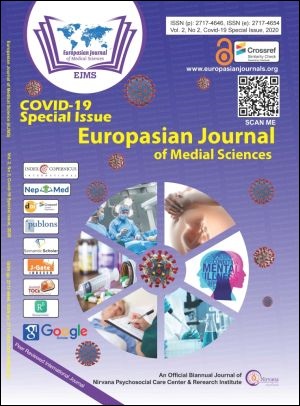Different Modes of Transmission and Containment Strategies for COVID-19
Keywords:
Contagious, Containment strategies, COVID-19 Pandemic, SARS-CoV-2, TransmissionAbstract
Coronavirus disease (COVID-19) is a respiratory infectious ailment caused by severe acute respiratory syndrome coronavirus-2 (SARS-CoV-2). The first outbreak of this disease occurred in China and declared a pandemic in a very short period of time. SARS-CoV-2 gets transmitted mainly through the respiratory tract by droplets or respiratory secretions and by direct contact with the infected person as well as indirect contact through touching the contaminated surface accompanied by poor hygiene practice. Until the vaccine, a therapeutic agent or any other treatment modality gets approved; contact tracing and management, social distancing, personal hygiene, respiratory etiquette, and environmental decontamination are the prime factors to be considered for transmission containment and hence for appropriate safety measures for COVID-19 which is possible with the support of social work from the community level.
Downloads
Downloads
Published
How to Cite
Issue
Section
License
Copyright (c) 2020 Sitaram Khadka

This work is licensed under a Creative Commons Attribution 4.0 International License.
The author(s) retain the ownership of the copyrights for their work published in EJMS without any restrictions. Upon submission, the author(s) grants EJMS a license to publish, including to display, store, copy, and reuse the published content.
License to Publish
By submitting a manuscript to EJMS, the author(s) grant the journal a non-exclusive license to:
- Publish and distribute the content in all formats, media, and platforms (both existing and future), while identifying EJMS as the original publisher.
- Reproduce, display, and store the content in both print and online formats, including institutional and digital repositories.
- Translate, adapt, and summarize the work, including reprints, extracts, and abstracts.
- Develop derivative works based on the original content.
- Include the work in electronic databases and provide links to third-party materials.
Creative Commons Licensing
In addition to EJMS’s publishing rights, authors grant third parties the right to use, share, and distribute their work under the Creative Commons Attribution 4.0 (CC BY 4.0) International License. This allows unrestricted use of the content, provided proper attribution is given to the original author(s) and the journal.

